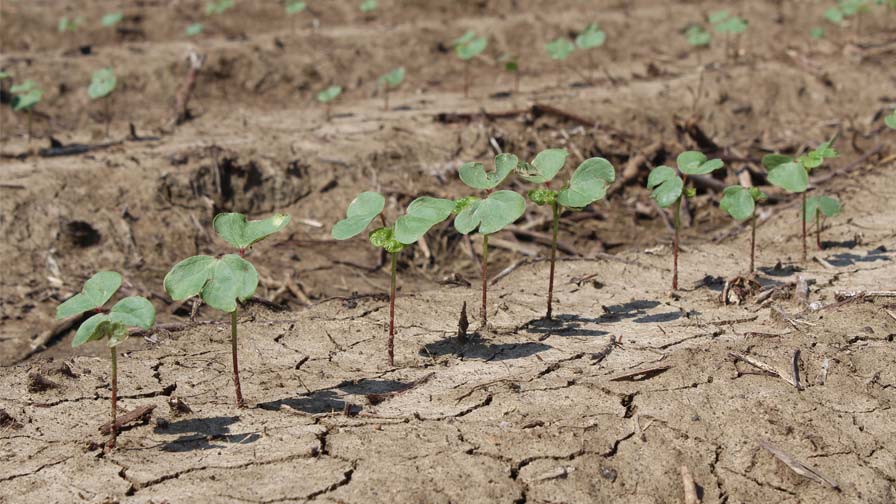Cotton Researcher of the Year: “Work Together at the Global Level”
For each of the last three years, the International Cotton Advisory Committee (ICAC) has identified a cotton researcher whose work and ideas are so important and innovative that special recognition is warranted. This year, that researcher is Dr. Sukumar Saha, research geneticist, USDA/ARS, Genetics and Precision Agriculture Unit, Mississippi State University, making him the third recipient of ICAC’s Cotton Researcher of the Year award.
It has been a good couple of years for Dr. Saha, who also was awarded “2010 Outstanding Research Award in Cotton Genetics” at the Beltwide Cotton Conferences, which are organized by the National Cotton Council of America.
Fortunately, winning the awards hasn’t lessened his sense of humility.
“This award is a testimony to the support, help and collaboration of my colleagues and friends in my research,” Dr. Saha told Cotton International. “Cotton farmers are facing serious challenges due to competition from the synthetic fibers, the decrease of per-capita cropland, degradation of soil, unpredictable environments, inadequate supply of water, high cost of energy and decline in the genetic potential of the elite lines.
“However,” he continued, “I believe that our future holds more promise and potential, if we work together at the global level to combat these problems. Technology will be the key factor to provide solution for sustainable cotton production in future. Producers will find new potential in biotechnology complementing conventional methods of crop improvement. A global research initiative to decode cotton genome will help in understanding the importance of functional genomes and evolution. This will stimulate research on the improvement of biological processes key to improve agricultural productivity.
“Genetic engineering will be used for new traits such as drought resistance for arid areas, new plant bug resistance, herbicide resistance, improvement of yield and fiber qualities. DNA marker technology will be used as a tool for finding new genes and expediting breeding process. New desirable characteristics might be added to cotton, such as increased fineness, higher strength, increased flame resistance, improved wrinkle recovery in fabric, or desirable colors, potentially reducing the need for chemical dyes.”
It’s Been a Long Journey
Dr. Saha worked as an agricultural extension worker for eight years in India before immigrating to the United States. After working as a research assistant professor for five years at Alabama A&M University, Dr. Saha assumed the present position with USDA/ARS in 1997. He demonstrated outstanding stature and received significant recognition as an international authority in cotton genomics and cytogenetic resources that are being used by the scientists in the USA and around the world. In recognition of his contributions to cotton, he was awarded the “2010 Outstanding Research Award in Cotton Genetics” at the Beltwide Cotton Conferences organized by the National Cotton Council of America every year. Over 5,000 researchers/farmers attend these conferences.
Dr. Saha made a major contribution in developing PCR-based SSR markers (JSPER and MGHES), a critical first step for the use of PCR-based marker technologies in cotton breeding programs. MGHES markers were first publicly available EST-SSR markers for use as a tool for marker assisted selection program and molecular mapping in cotton. He also made a significant contribution in the discovery of molecular markers associated with important traits in cotton. Dr. Saha is one of the two lead scientists providing leadership in the release of 17 interspecific chromosome substitution lines in cotton. This research will provide a tool to overcome the problems of interspecific introgression and in the discovery of some novel genes or traits whose effects could not be detected in the donor Pima 3-79 line.
Dr. Saha helped to establish one of the most advanced molecular biology lab in the Central Asia and trained Uzbek young scientists. He is one of eight founding scientists who initiated International Cotton Genome Initiative organization (ICGI) to facilitate collaborative research work on cotton genomics at the global level about eight years ago. As the chairman of the Germplasm Work Group of ICGI, Dr. Saha provided leadership for the first time to document the current status of world cotton collection in collaboration with the curators from the major cotton growing countries and this report has recently been published in Crop Science as the cover page paper (2010. 50:1161-1179). Dr. Saha’s research productivity is well documented in about 130 publications, including 77 peer-reviewed journal articles in many prominent journals, one germplasm release notice, a co-edited book, additional multiple papers and abstracts in presentations at conferences.
As prolific as he has been in his professional career, Dr. Saha knows that it will take the combined efforts of many people–in both the public and private sectors–to ensure cotton continues to receive the resources it needs to clothe the world in the future.
“In closing, I must mention that public and private partnership will be the key to the success of global cotton research effort to provide resources necessary for meeting the future demands of cotton producers,” he said.
About the Award
The International Cotton Advisory Committee honors a cotton researcher every year by awarding a certificate of recognition, a shield and an honorarium of $1,000. Every year, applications are invited from February 1 to March 31. This year, 10 candidates from seven countries applied or were nominated for the 2011 award. The Selection Committee is comprised of five anonymous judges from four countries. More information about the award is available here.








